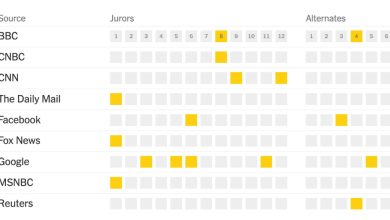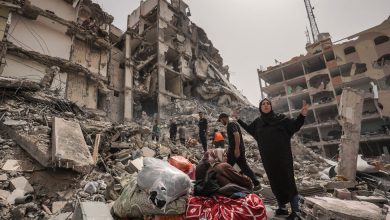When Home Is Now the Front Line

Two years after Russia launched its full-scale invasion of Ukraine, the hourly artillery duels, airstrikes and pitched fighting in the country’s east and south have turned the more than 600-mile front line into a scarred frontier. Parts of it may be uninhabitable for years, if not decades. Villages and towns are destroyed. Fields are mined. Roads are barely recognizable.
But clinging to the wreckage of their homes, and hometowns, are residents who refuse to leave. Buoyed by volunteers who deliver aid and their own battle-hardened survival instincts, they carry on with their lives in an unending test of endurance. The reasons they stay are many: to care for disabled family members, to look after pets or livestock or, plainly, their love of home.
But in enclaves where the thuds of artillery serve as white noise, war is never far away.

Ukrainian soldiers with the 66th Brigade sitting in an armored vehicle at an undisclosed location near the front line in the Donetsk region.
In the southern port city of Kherson and the villages around it, residents have endured months of Russian occupation, a cold winter without electricity and an unending barrage of artillery shells.
Some left after the initial Russian occupation and returned in November 2022, after Ukraine’s military retook the city, but weekly evacuations continue. Kherson’s current population is around 60,000. Before the war, almost five times that many people lived there.




